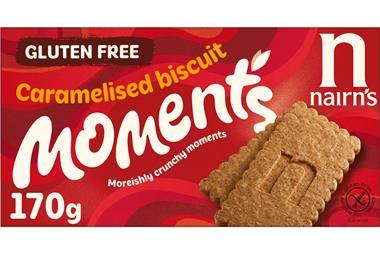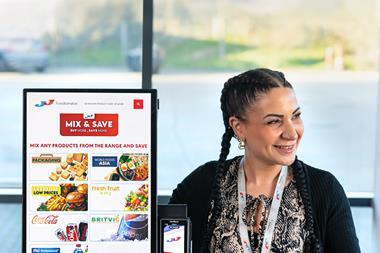You only have to look in the national newspapers each day to realise how important, and widespread, food and drink promotions have become for the retailers.
On one randomly selected day we found Asda selling tubes of Pringles at the discounted price of £1 and 15 tulips for £3 as part of its Mothers' Day promotion. Tesco, meanwhile, had a huge range of Easter eggs on bogof. Sainsbury's was selling the DVD of the latest Bond movie Casino Royale for £8.99 but was trumped by Asda, which was selling copies at £7 for a limited period. You get the picture.
But while this tactic helps retailers get consumers through their doors, suppliers are increasingly concerned about the effects that this discounting is having on their businesses.
An exclusive survey of 200 manufacturers, conducted by Billetts Marketing Services on behalf of The Grocer, reveals that 75% of suppliers say they spend either too much or far too much on promotions, compared with 63% last year and 48% two years ago.
The results signal the continuing escalation both in the depth and frequency of promotions across the fmcg industry. Just short of 80% of surveyed companies say that more than 25% of total sales are now made on promotion. This is a staggering figure, especially when you consider that just two years ago only 52% of companies were in this position.
The era of the heavy promotions doesn't look like ending any time soon. Today's shoppers, weaned on a diet of deep discounts, are now addicted to getting a bargain in their supermarket.
"Retailers are good marketers that know what their customers want," says Ian Fermor, director of promotional services at Billetts. "If they want aggressive promotions then retailers will ask their suppliers for it."
Consumer willingness to shop around for the best deals also means that retailers can no longer rely on a few loss leaders to get customers through their doors, and they are increasingly turning to their suppliers for help.
The other difficulty for manufacturers is that, in parallel with promotions, retailers have also pushed to deliver on their Every Day Low Pricing strategies, meaning that discounts are based on ever-lower base prices. This makes it difficult for many promotions to stack up financially, says Fermor.
Billetts found that the return on investment on discount promotions of 40% or more is about a third of the level of that achieved for discounts within the 20-40% level.
"We do see a positive return on investment for deeper discounts but it is less compared with shallower discounts," says Fermor. "It's about balancing the percentage margin with the cash pile you're generating."
Is the current level of promotion sustainable? Since there are sufficiently strong brands to do this, the trend for deep discounting looks set to continue, Fermor adds.
"Retailers are competing hard with each other and suppliers are inevitably used as pawns in their game, with mid-size companies appearing particularly vulnerable."
The supermarkets' attitudes are doing little to foster better supplier/retailer relationships. The more cynical supplier responses given in the survey include comments such as "retailers require brands to promote regularly as a condition of listing" and "the retailers have more promotions than slots so they don't care".
But it's not all doom and gloom. Fermor notes that the biggest and most successful brands are often the heaviest promoters and that a strong promotional platform can boost brand exposure.
"Customers tend to see discounting on a premium brand as simply a great deal rather than as a price cut," he adds.
The most effective promotions are regarded as 'expansive' categories such as snacks and soft drinks where they can drive consumption. Examples of non-expansive categories include toothpaste, where Fermor says there is only so much a consumer will use, regardless of the level of discount on offer, and a lower level of experimentation.
And he warns that while some promotions can "create a huge profit pool", problems arise when retailers promote brands aggressively side-by-side, playing them off ruthlessly - such as in beers, wines and spirits, especially over the Christmas period. "These promotions are so aggressive that they are not profitable," he says.
In many cases that applies as much to the retailer as the manufacturer (though the retailer, of course, has the advantage of other products to boost shopping basket profitability).
Another issue for manufacturers is that retailers frequently employ a one-size-fits-all strategy to promotions no matter what the category is. According to the survey, 79% of respondents say that retailer strategies are not fit-for-purpose.
The solution is for manufacturers to be more proactive in their promotional spending and to approach retailers with fact-based arguments on how they wish to execute promotions.
"At the end of the day retailers are rational, so if manufacturers go in with their facts on a promotion that is more sales-enhancing and profit-boosting then it will happen," says Fermor.
Despite retailers holding increasingly large amounts of useful customer data, Fermor believes that manufacturers know their brands better than the retailers and that ultimately gives them the upper hand when arguing their case.
He says that strong, innovative brands, for example, should negotiate with retailers and encourage them to weigh up a promotion's benefits with the likely loss of full-price sales on competing brands.
"Manufacturers should be saying 'I'm the manufacturer and I know more about this than you, so let us work with you and help you understand it'. The balance of power is with retailers in many ways, but not always with promotions."
This approach would help to overcome the spiral of ever-deeper discounts and guide into the domain of well thought-out but shallower discounts, he adds.
Many manufacturers actually recognise their own fault in the spiral and acknowledge that they could improve their promotional management. When asked to score themselves out of six for their discounting strategies, the average score was four, a fall from 4.2 last year. Some 41% of companies don't believe they are good at executing promotions effectively.
Suppliers showed even less confidence in their abilities at forecasting promotional results, giving themselves an average score of only 3.6. This is still an improvement on the 3.4 score they gave themselves last year and 3.3 in 2005.
In-store execution remains a particular problem with 63% of respondents scoring themselves below par in this area, with the average score only 3.1 out of six.
The survey also looked at how suppliers rated the way supermarkets deal with promotions.
Out of the big five retailers Tesco comes out on top with a score of 4.2 while Morrisons, Sainsbury's and Waitrose all scored 4.1. Asda was a long way behind at just 3.1.
According to Fermor, Morrisons tends to do particularly well with promotions in secondary locations, such as gondola ends, and typically runs promotions in as many as 75% of stores compared with 40% at its rivals.
Some manufacturers could even be under-scoring Morrisons on the basis that there is still some bad feeling towards it after the Safeway merger, and because its high level of promotional execution is now very much taken for granted, Fermor suggests.
Tesco scores well on the basis that it has scale so it can deliver big absolute numbers to manufacturers from promotions. So while Morrisons can provide the greater sales uplifts per store, Tesco still delivers the greatest overall sales increases because of its sheer size.
Like Morrisons, Tesco also benefits from having a heritage of promotional activity. Although it defended its position against Asda and its EDLP stance, it never completely moved away from incorporating promotions into its strategy, says Fermor.
Asda's dogged pursuit of EDLP, meanwhile, is increasingly affecting its ability to deliver on promotions and its score this year is a further deterioration on the 3.3 that suppliers awarded it the previous year.
Sainsbury's has made the most progress over the year, scoring 4.1, which compares with 3.6 in 2006 and 2.5 in 2005 when it came last out of the top five supermarkets. This is a notable turnaround since Fermor says that in 2005 60% of the written responses about Sainsbury's were at best "vitriolic".
Not surprisingly, the survey suggests Kwik Save has the poorest handle on promotions with a score of only 1.4 compared with a more respectable 3.1 in 2005. Only 28% of respondents gave the company a score above one and not a single manufacturer awarded it more than three out of six. Just two years ago Kwik Save achieved more impressive results. But the fact the company now trades with only 25% of companies surveyed compared with 84% in 2005 highlights just how dramatic its fall has been since it ran into financial difficulty last year.
So how can brands up their game against such a tough backdrop?
Fermor says both the brand manager and retailer national account manager should be able to outline promotional strategy in two minutes and pull out a full post-activity review of every promotion that commanded more than £50,000 of funding. "If not, there is a huge gap in your corporate strategy and a major hole in your corporate governance. And it needs filling."
Ultimately, he says, the onus is on the brand owners themselves to reduce the amount of deep discounting. "We see many companies referring to competitor activity as a key driver of the escalation of promotions. But if you make the bold decisions not to promote in a manner that may hurt you, then across the industry there might just be a change in attitude, actions and results."n
















No comments yet